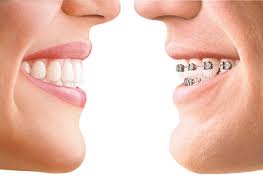Invisible braces, also known as clear aligners, have gained popularity as a discreet and convenient option for orthodontic treatment. However, there are still some misconceptions and myths surrounding these innovative dental appliances. In this article, we will debunk common misconceptions about invisible teeth aligners to provide a clearer understanding of their benefits and limitations.
Myth: Invisible braces are only suitable for minor teeth misalignment.
Reality: Invisible braces can address a wide range of orthodontic issues, including mild to moderate crowding, spacing, overbite, underbite, and crossbite. However, severe cases may require alternative orthodontic treatments. A consultation with a dental professional can determine the suitability of invisible braces for your specific needs.
Myth: Invisible braces take longer to straighten teeth compared to traditional braces.
Reality: The duration of orthodontic treatment depends on the complexity of the case rather than the type of braces used. In some cases, invisible braces may actually achieve results faster than traditional braces. Each treatment plan is customized, and your dentist or orthodontist will provide an estimated timeline based on your specific requirements.
Myth: Clear aligners need to be worn 24/7 for effective results.
Reality: While it is important to wear your clear aligners for the recommended duration, they are designed to be removable. Typically, aligners should be worn for 20 to 22 hours a day for optimal results. This flexibility allows you to remove them for eating, brushing, and special occasions, providing convenience and comfort during your treatment.
Myth: Invisible braces are more expensive than traditional braces.
Reality: The cost of orthodontic treatment varies based on several factors, such as the complexity of the case, the duration of treatment, and the specific dental provider. In some cases, the cost of invisible braces may be comparable to traditional braces. It is best to consult with your dentist or orthodontist to discuss the cost and potential payment options.
Myth: Clear aligners are uncomfortable to wear.
Reality: Invisible braces are designed to fit snugly and comfortably over your teeth. While you may experience some initial discomfort or pressure during the first few days of wearing a new aligner, it is typically mild and temporary. As your teeth adjust, any discomfort should subside. Compared to traditional braces, clear aligners generally cause less irritation and soreness.
Myth: Invisible braces are not as effective as traditional braces.
Reality: Invisible braces are an effective orthodontic treatment option for many cases. The clear aligners gradually shift your teeth into the desired positions, similar to traditional braces, but without the use of brackets and wires. However, treatment success relies on proper compliance and wearing the aligners as instructed by your dental professional.
Myth: Anyone can straighten their teeth with invisible braces without professional supervision.
Reality: Clear aligners require professional oversight. Your dental professional will create a customized treatment plan, monitor your progress, and make adjustments as needed. Regular check-ups and progress evaluations are necessary to ensure the treatment is progressing as planned and to address any concerns that may arise.
Myth: Clear aligners can only be used by adults.
Reality: Invisible braces are suitable for both adults and teenagers, depending on their specific orthodontic needs. In fact, there are specialized clear aligner systems designed specifically for teenagers. However, the decision to use clear aligners should be made in consultation with a dental professional who can assess the individual's oral health and development.
By debunking these common misconceptions, it is evident that invisible braces offer a convenient, effective, and aesthetically pleasing option for orthodontic treatment. If you are considering clear aligners, consult with a dental professional to determine if they are the right choice


No comments yet